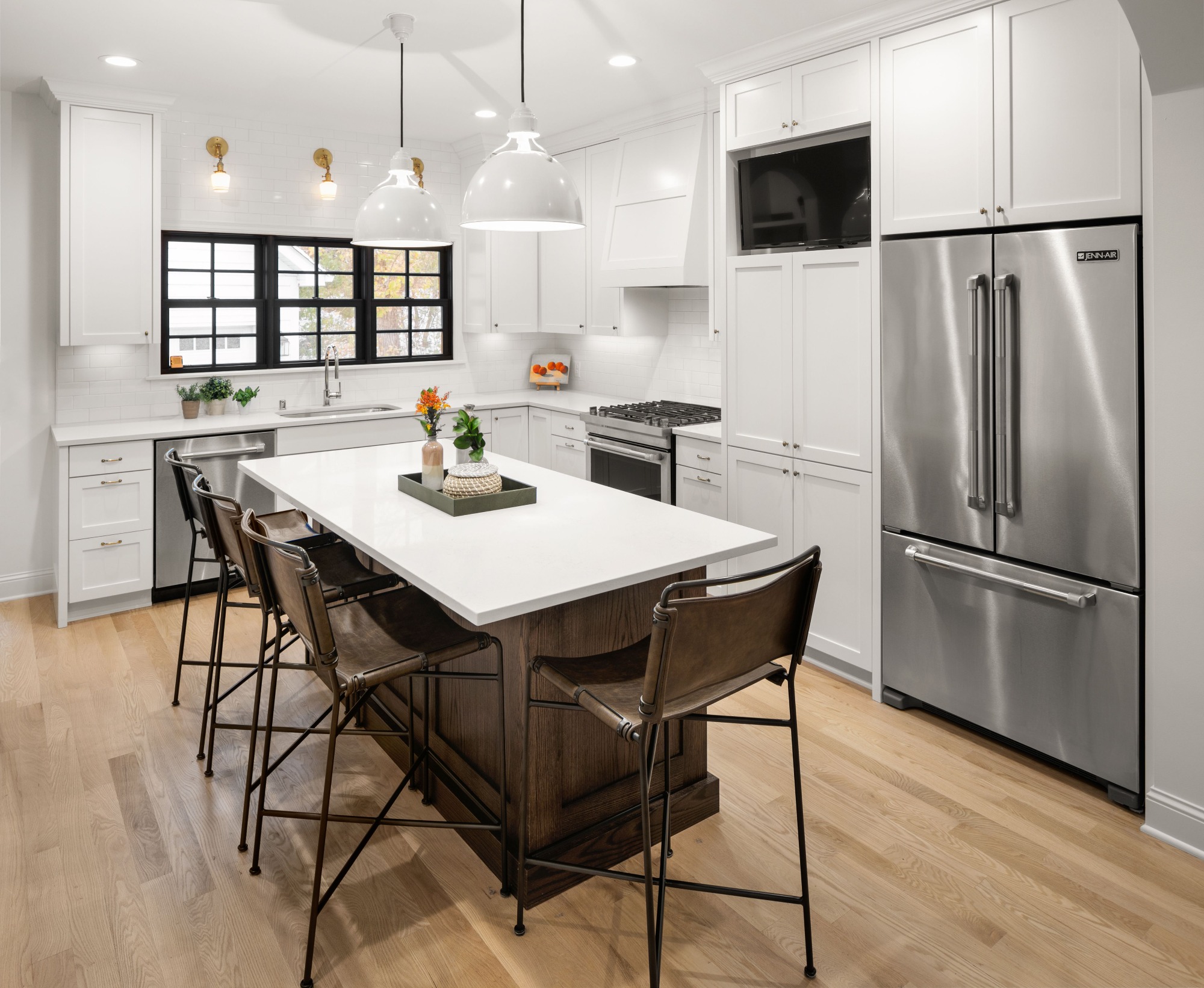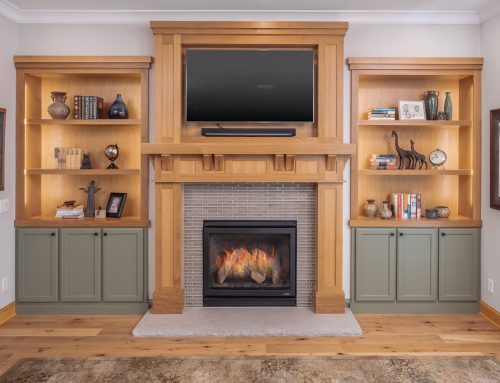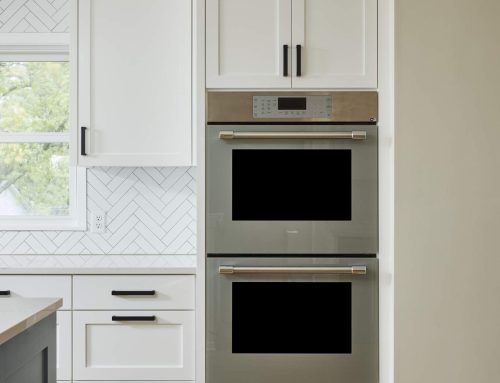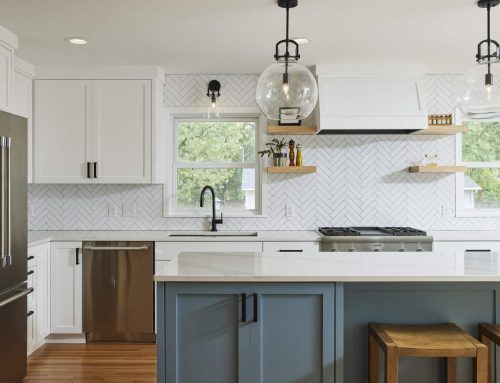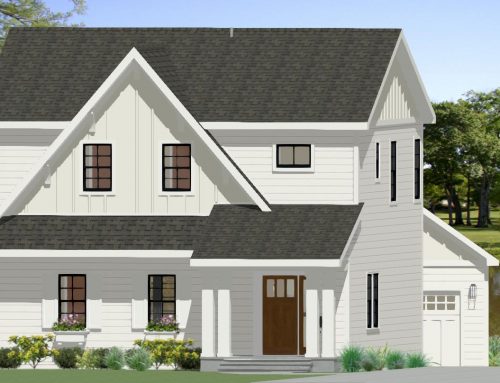Lighting plays a pivotal role in your kitchen remodel. A well-lit kitchen not only enhances functionality but also contributes to the overall aesthetics and ambiance of the space. The significance of proper lighting extends beyond practicality; it is an essential design ingredient that can set the mood, influence the color scheme, and highlight your kitchen’s architectural features. Good lighting design can transform a kitchen from merely functional to professional-grade aesthetics and efficiency.
There are several types of lighting to consider for your kitchen remodel. Ambient lighting, the base layer of lighting, provides overall illumination to the room. Task lighting focuses on specific areas like countertops, sinks, or stovetops where more precise activities take place. Accent lighting is used to highlight certain features of the kitchen such as artwork or architectural details. Lastly, decorative lighting, such as pendant lights or chandeliers, adds a touch of style and personality to your kitchen. Understanding these types of lighting is essential as they work together to create a balanced and flexible lighting plan for your kitchen remodel.
Understanding Different Types of Lighting
Ambient Lighting
In the realm of kitchen lighting, it is important to understand the different types of lighting and their specific uses. The first type, ambient lighting, serves as the primary source of light for your kitchen. This type of lighting is designed to radiate a comfortable level of brightness without glare, allowing for safe and easy movement around the kitchen. Ambient lighting typically comes from recessed or track lights, wall sconces, or even large overhead fixtures. It’s also the type of lighting that can dramatically alter the overall mood and feel of your kitchen. Properly chosen ambient lighting can make your kitchen appear larger or smaller, cozier, or more spacious, depending on your design goals.
Task Lighting
Moving on to task lighting is the focused, directional light that helps you perform specific tasks in your kitchen – such as chopping vegetables, reading a recipe, or cleaning up after a meal. Task lighting is crucial for safety, particularly around cooktops and other kitchen appliances. It’s typically provided by under-cabinet lights, pendant lights, and adjustable track lights. With task lighting, you can focus on the area you are working on while keeping the rest of the kitchen in softer light, reducing eyestrain and increasing visibility.
Accent Lighting
Lastly, accent lighting is used to highlight specific areas or features in your kitchen. This could be a beautiful backsplash, pieces of artwork, or open shelving displaying your favorite dishes. Accent lighting creates visual interest and adds a layer of sophistication to your kitchen design. It’s typically achieved with directional track lights, recessed lights, or wall-mounted fixtures. By carefully choosing and positioning your accent lighting, you can draw attention to your kitchen’s best features and away from less attractive areas.
Choosing the Right Light Fixtures
Continuing from our understanding of the distinct categories of lighting, let’s delve deeper into how to select suitable fixtures for your kitchen. The process of choosing the right light fixtures significantly depends on three key factors: the size of your kitchen, the layout, and the overall style or décor.
Kitchen’s Size
The size of your kitchen plays a crucial role in determining the type and quantity of light fixtures you’ll need. A larger kitchen may require a combination of ambient, task, and accent lights to adequately illuminate the space. For instance, recessed lighting can be strategically placed to provide general ambient lighting, while pendant lights over the island or countertop can serve as task lights. In contrast, a smaller kitchen might only require a single source of ambient light complemented by under-cabinet task lighting to maximize space and provide sufficient illumination.
The Kitchen Layout
The kitchen layout also influences the choice of fixtures. An open-plan kitchen calls for a different lighting strategy than a galley or L-shaped kitchen. In an open kitchen, you might opt for a statement chandelier or a series of pendant lights to define the space and provide a visual anchor. On the other hand, in a galley or L-shaped kitchen, recessed lighting or track lighting could be a more practical choice to ensure every corner is well-lit.
Kitchen’s Style and Décor
Lastly, your kitchen’s style and décor will dictate the design of the light fixtures you choose. A modern kitchen might benefit from sleek, minimalist lighting fixtures, while a traditional or farmhouse-style kitchen might look best with rustic, industrial-style fixtures. It’s essential that the light fixtures not only serve their functional purpose but also contribute to the overall aesthetic charm of your kitchen. Remember, the goal is to create a harmonious blend of style, functionality, and comfort.
Lighting Placement Tips
When it comes to lighting placement in your kitchen remodel, there are three main categories to consider: ambient, task, and accent lighting. Each serves a unique purpose and should be positioned strategically for maximum effectiveness.
Ambient Lighting
Ambient lighting, also known as general lighting, is the primary source of illumination in your kitchen. Therefore, its placement is crucial. Typically, ambient lights are centrally positioned, often in the form of ceiling-mounted fixtures or recessed lights. In larger kitchens, it might be beneficial to install multiple ambient light sources to ensure even distribution of light.
Task Lighting
Task lighting, as its name suggests, is meant to illuminate specific work areas. This could include countertops where food preparation takes place, the stove, or the sink. Under-cabinet lighting is a popular choice for task lighting as it directly illuminates the area below without creating shadows. It’s also wise to consider adjustable fixtures that allow you to direct light exactly where you need it, enhancing the functionality of your kitchen.
Accent Lighting
Lastly, accent lighting is used to highlight specific features or areas in your kitchen. This could be a piece of artwork, open shelving, or architectural details. The placement of accent lighting depends entirely on what you wish to highlight. However, it’s commonly placed inside cabinets with glass doors or under floating shelves to showcase decorative items.
Remember, the goal of good kitchen lighting is not just visibility but also creating a warm, inviting atmosphere. Therefore, consider the placement of your lighting in the overall layout and style of your kitchen.
Consideration of Energy Efficiency
In the process of planning your kitchen remodel, an essential aspect to consider is energy efficiency, particularly when choosing your lighting. Not only does energy-efficient lighting reduce your carbon footprint, but it also significantly lowers your utility bills. This means that in addition to creating a well-lit, aesthetically pleasing kitchen space, you can also save money and contribute to environmental conservation.
Light Emitting Diodes (LEDs)
There are several options available when it comes to energy-efficient light bulbs suitable for kitchens. These include Light Emitting Diodes (LEDs), Compact Fluorescent Lamps (CFLs), and Halogen Incandescents. LEDs are currently the most energy-efficient option on the market. They use less electricity and last up to 25 times longer than traditional incandescent bulbs. While LEDs may have a higher upfront cost, their long lifespan and low energy usage make them a cost-effective choice in the long run.
Compact Fluorescent Lamps (CFLs)
CFLs are another great option for kitchen lighting. They use about one-third of the electricity of traditional incandescent bulbs and last up to 10 times longer. CFLs emit a warm, inviting light that is perfect for creating a cozy kitchen atmosphere. However, they take a bit of time to reach full brightness and contain a small amount of mercury, which requires special disposal.
Halogen Incandescents
Halogen incandescent, while not as energy-efficient as LEDs or CFLs, are still a better choice than traditional incandescent bulbs. They use about 25% less energy and last up to three times longer. These bulbs emit a bright, white light that is ideal for task lighting in the kitchen.
In conclusion, considering energy efficiency in your kitchen lighting design is not only beneficial for the environment but also for your wallet. LEDs, CFLs, and Halogen Incandescents are all excellent choices that align with an eco-friendly and cost-effective kitchen remodel.
Understanding Color Temperature
Following the path of energy efficiency, one must understand the concept of color temperature in lighting. Color temperature, measured in Kelvin (K), determines the color appearance of a light source. It ranges from warm (lower Kelvin numbers like 2000K-3000K that produce a yellowish-white light) to cool (higher Kelvin numbers like 5000K-6500K that emit a bluish-white light). Color temperature doesn’t reflect the actual heat of the light but rather the warmth or coolness of its appearance. It’s a critical aspect of creating the desired atmosphere in your kitchen.
Choosing the Right Color Temperature for Your Kitchen
When it comes to choosing the right color temperature for your kitchen, it primarily depends on your personal preference and the functionality of the space. Lower color temperatures (2700K-3000K) are often recommended for traditional kitchen designs, providing a warm, cozy ambiance. These warm lights are perfect for socializing and dining. On the other hand, a higher color temperature (3500K-5000K) produces a cooler, more energetic light ideal for task-oriented areas like countertops, sinks, or any place where you need clear, precise light.
Remember, while LEDs are an energy-efficient choice, they also offer a wide range of color temperatures. CFLs, though less efficient than LEDs, emit a warm and inviting light suitable for general kitchen use. Halogen incandescents, while not as energy-efficient, offer a bright, white light with a cooler color temperature, making them perfect for task lighting. So, while choosing your kitchen lighting, consider both energy efficiency and color temperature to create a balanced, functional, and inviting kitchen space.
Lighting Control Options
After considering color temperature and energy efficiency in your kitchen remodel, the next aspect to ponder over is lighting control options. These are essential to creating a versatile and functional kitchen space, adaptable to different moods and activities. The three popular lighting control options are dimmers, motion sensors, and smart lighting.
Dimmers
Dimmers offer a range of benefits and uses. They allow for control over the intensity of the light, which can significantly alter the ambiance of your kitchen. For instance, a dimmer can lower the light for an intimate dinner but can also brighten the space for meal preparation or cleaning. This adjustable lighting also results in energy conservation, as you only use the amount of light that you need.
Motion Sensors
Motion sensors, on the other hand, are a brilliant way to implement energy efficiency. They detect movement, turning the lights on when you enter the room and off when you leave. This feature eliminates the concern of accidentally leaving lights on, conserving energy, and reducing electricity bills. Motion sensors also add a convenience factor, especially when your hands are full or in the middle of the night when you don’t want to fumble for a switch.
Smart Lighting
Smart lighting is the latest advancement in lighting technology. It provides benefits such as remote control from your smartphone, voice control via home assistants, and even the ability to schedule when your lights turn on and off. This type of lighting can adjust the color temperature, mimicking the natural rhythm of daylight. It’s an excellent option for ensuring your lighting adapts to your lifestyle and preferences.
Choosing the right lighting control options can enhance the functionality and ambiance of your kitchen, aligning with your energy efficiency goals and color temperature preferences.
Conclusion
In summary, choosing the right lighting for your kitchen remodel can significantly impact the functionality and aesthetics of your space. From the type of lights to their placement, every detail matters. We’ve examined the importance of task, ambient, and accent lighting, and how these layers work together to create a well-lit and inviting kitchen. Moreover, lighting control options like dimmers, motion sensors, and smart lighting can elevate your kitchen experience by offering adjustable intensity, automatic operation, and advanced features like remote and voice control. These options not only provide versatility and convenience but also contribute to energy efficiency.
Picking lighting for your kitchen remodel is not a task to take lightly. It’s crucial to consider all aspects, including the style of your kitchen, the intensity of light needed, the location of your light fixtures, and the type of lighting controls that will best serve your needs and lifestyle. With careful planning and consideration, you can transform your kitchen into a space that is not only practical and efficient but also warm and welcoming.
Choosing the right lighting can be a daunting task, especially with the myriad of options available. However, remember that every decision you make contributes to creating a kitchen that reflects your style and meets your needs. Don’t rush this process; take your time to understand each option and how it could benefit your space. Investing time in this step of your kitchen remodel can result in a beautifully illuminated kitchen that you’ll love for years to come. Elevate your kitchen’s ambiance with the perfect lighting selection and installation by Sicora Design/Build. Our expert team ensures the ideal lighting solution to complement your kitchen’s design and functionality, creating a space that’s both inviting and efficient.
Name, Address, and Phone
Sicora Design / Build
5601 W Lake St, Minneapolis, Minnesota, 55416, US
(952) 592-9380
Social Media’s
https://www.facebook.com/sicoradesignbuild
https://www.instagram.com/sicoradesignbuild

